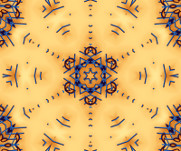Hypnosis, Self Hypnosis and Hypnotherapy
The word ‘hypnosis’ comes from the Greek hypnos which means ‘sleep’ and osis which means ‘condition’. Hypnosis refers not only to the condition of sleep, but also implies varying blends of consciousness and unconsciousness. Hypnosis also refers to the mind’s nature to be induced into a trance state.
The word ‘trance’ come from the Latin trans which means ‘across, over, go beyond’ (transport, transform, translate) and the word ‘induce’ comes from the Latin ducere which means ‘to lead’ (induction, conductor, aqueduct). ‘Self hypnosis’ refers to one’s own ability to lead their own mind into a trance state.
The word ‘hypnotherapy’ refers to the use of inducing a relaxed, sleep-like or dream-like state as a means of healing (Greek therapeia meaning ‘cure’ or ‘healing’). Both the AMA and the APA, since 1958 (the year I was born!), recognize hypnotherapy as being a medical process. The NIH, since 1995, recommends it to treat chronic pain. But the use of a sleep-like or dream state as a means of healing has been recorded in the histories of the oldest civilizations and past down through the lineages of our indigenous cultures.
Trance states are natural and common to human experience. The deepest trance, unconsciousness, trance-ports us into the world of dreams. Fortunately for most of us, we are induced into this healing trance by our own body’s physiology, which we call ‘tiredness’, and if we have good sense we surrender to that call.
Sleep is one of the most essential resources supporting our life. Just like air, water and food, we couldn’t survive for long without it. There is an abundance of scientific information showing that during our sleep trance our physiology goes through processes that heal and restore our vitality. We spend 33% of our lives asleep. We all have a lot of practice giving ourselves over to this trance-formational healing process.
Another common trance state is the one sometimes referred to as ‘ordinary’ reality. This state is a function of the habits of our minds, and is actually another form of sleep. I have a sense that much of our lives are lived in this state, with moments in between where we ‘catch’ ourselves.
Have you ever walked into a room in your house and wondered why you had just come? You know there was a reason you’re there, and that you were moved to this room by your body acting on some thought or desire, but you can’t remember what it was. Have you ever been driving down the highway and realized that you’d gone many miles without being aware at all that you were driving, or had meant to exit but passed the exit out of ‘force of habit’? In both cases you were in a ‘waking’ trance, and you were being ‘walked’ or ‘driven’ by the force of habit. Your awareness was ‘asleep at the wheel’ because you were ‘lost in other thoughts’.
This is like a dream, being so absorbed in what we are thinking that we are missing the present moment experience as it is actually emerging. These examples demonstrate mechanisms which lead our lives by the force of habit.
Habitual processes, things we can do automatically without thinking about them such as talking, walking, writing, riding a bike or pulling out a set of keys and finding the one that fits the ignition, are all examples of what I call our ‘mech-animal’ nature. At first these complicated processes take a lot of awareness, time, practice, focus and presence to master. But as we learn these new skills, our consciousness is free to focus on other experiences, and we are able to execute these tasks with minimal (mech-animal) conscious presence. This applies to everything we learn, including who we think we are, how we take care of ourselves, live our lives and especially how we experience ourselves and the world we exist in. It is not uncommon for many of us to feel that we are ‘going through the motions’ of life or that we’re stuck in patterns of experience, thoughts, behavior such as addictions, feelings like pain, sadness, anger or fears that seem to ‘run’ our lives.
At this point the question “what can I do to change this pattern” arises for us. What I have found is that by bringing our awareness to the mechanisms that govern our habitual processes, we can create an opportunity to transform the outcome of those processes. And the outcome is the experience we call ‘I’.
I teach my clients how to cultivate the transformational awareness it takes to change the patterns they want to change. Through our work together, my clients develop a deep connection to the healing energy of their own physical presence.
